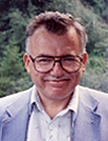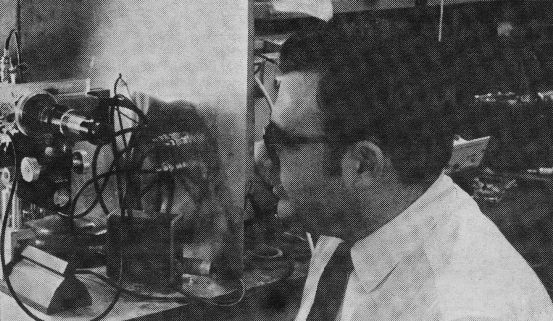Home Cytometry History General Histories Leiflight

The Development of Enhanced Fluorescence Detection Methods
by Robert Leif

Although ellipsoids, in principle, are the optimum design for gathering light, at the time I entered the field, there was a problem of stray light with all of the ellipsoid designs. The problem with aspheric optics including ellipsoids is that it is very difficult to maintain tolerances at a reasonable cost. Spheres are easy. I believe that fairly decent ones were made by the ancient Egyptians. The problems of making aspherical surfaces can be mitigated by use of very high quality numerically controlled diamond based manufacturing techniques.
However, the costs were excessive at the time I worked in the field 1970 – 1993. Because comparatively large aspheric surfaces do not focus light as well as spherical surfaces, the amount of stray exciting light and scattered light is increased. My sphere was superior because one could limit the image to the volume around the cell and perform light scattering with conventional equipment. The amount of light was increased by mirroring one side of the flow cell.

Bob Leif in 1971, with the Automated Multiparameter Analyzer for Cells, AMAC I
Spherical surfaces are relatively easy to make, since the tool is kept at a constant radius. Although the Coulter white cell counters employed cylindrical surfaces, the techniques developed to fabricate the inlets and outlets of these commercially produced cylindrical cells could and were applied to other fused silica transducers, such as my spherical cells. In fact, a good part of the technology to make the commercial fused silica transducers was derived from my basic research to produce spherical transducers. Small spheres have the advantage that conventional long working distance microscope objectives can be used to gather and focus the light. Parenthetically, the Coulter 5 part differential counters were and may still be the largest selling flow cytometers.
Al Brunsting was one of the fathers of light-scattering measurements. I believe that he was the first one to measure the angular distribution of the light scattered by a cell suspension. I had Wallace Coulter hire him. Al Brunsting and Walter Hogg patented several reflector based transducers. Walt Hogg, who had been Brunsting’s and my boss and was Wallace's side-kick, was a wonderful human being. Walt was an excellent scientific administrator and an honest decent human being. He died young. He started with Wallace in the basement in Chicago. His last years at Coulter were difficult because the company had already entered the mid-life decline that is very common to most organizations.
Since I wished to perform multispectral imaging and had met Jeremy Lerner (the grating guru), I was able together with Rick Thomas to detect the fluorescence of PI stained cells with a concave holographic grating. I then simplified the optics by using the undiffracted (0 order) light to form an image of the stream in the orifice (US 4,351,611).
- R.C. Leif, R.A. Thomas, T.A. Yopp, B.D. Watson, V.R. Guarino, D.H.K. Hindman, N. Lefkove and L.M. Vallarino; “Development of Instrumentation and Fluorochromes for Automated Multiparameter Analysis of Cells.” Clin. Chem. 23, 1492-1498 (1977).
- R.C. Leif, Monitoring of a Detection Zone Utilizing Zero Order Radiation From a Concave Reflecting Grating, Coulter Electronics, 4,351.611 (1982).

